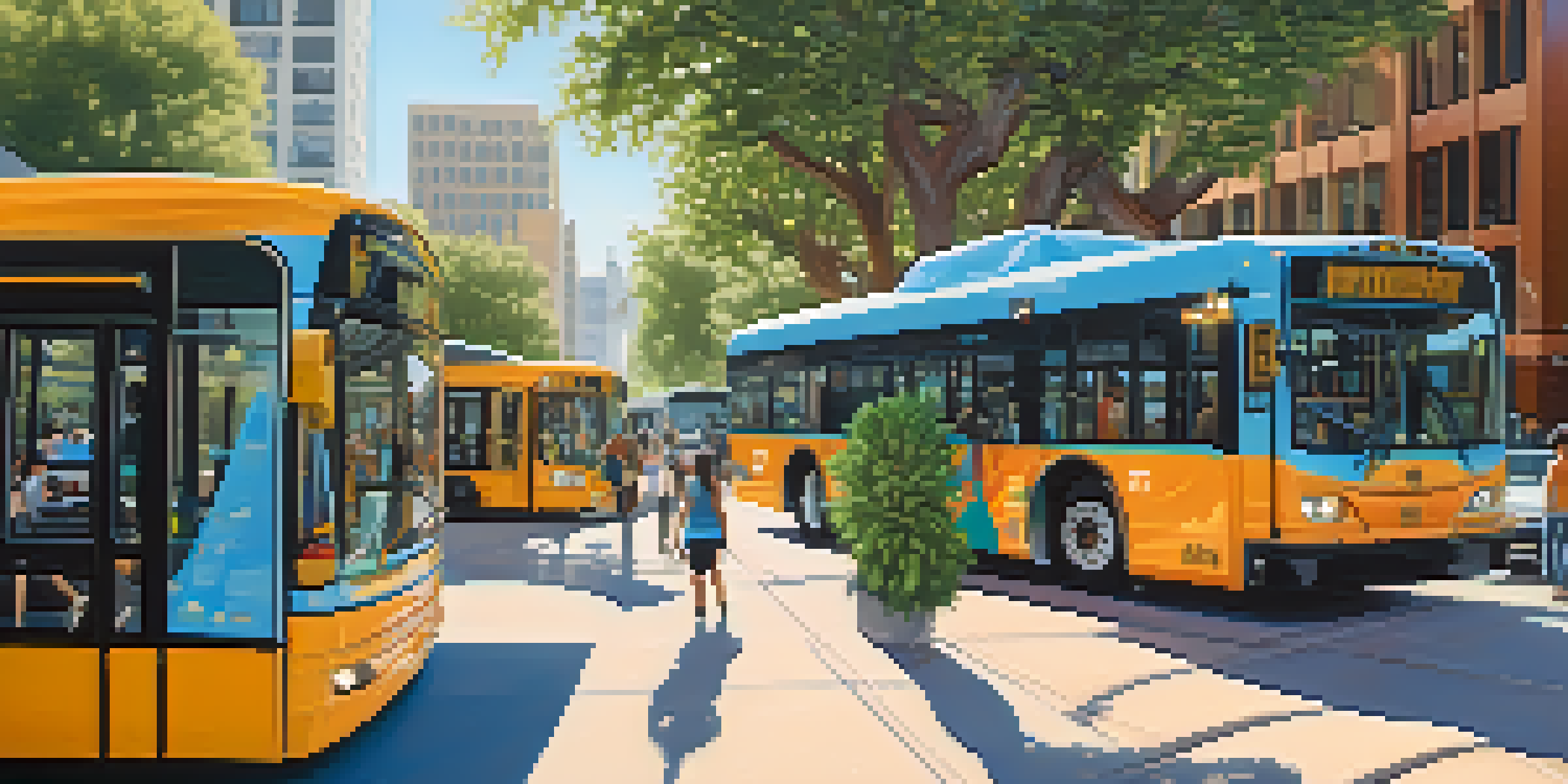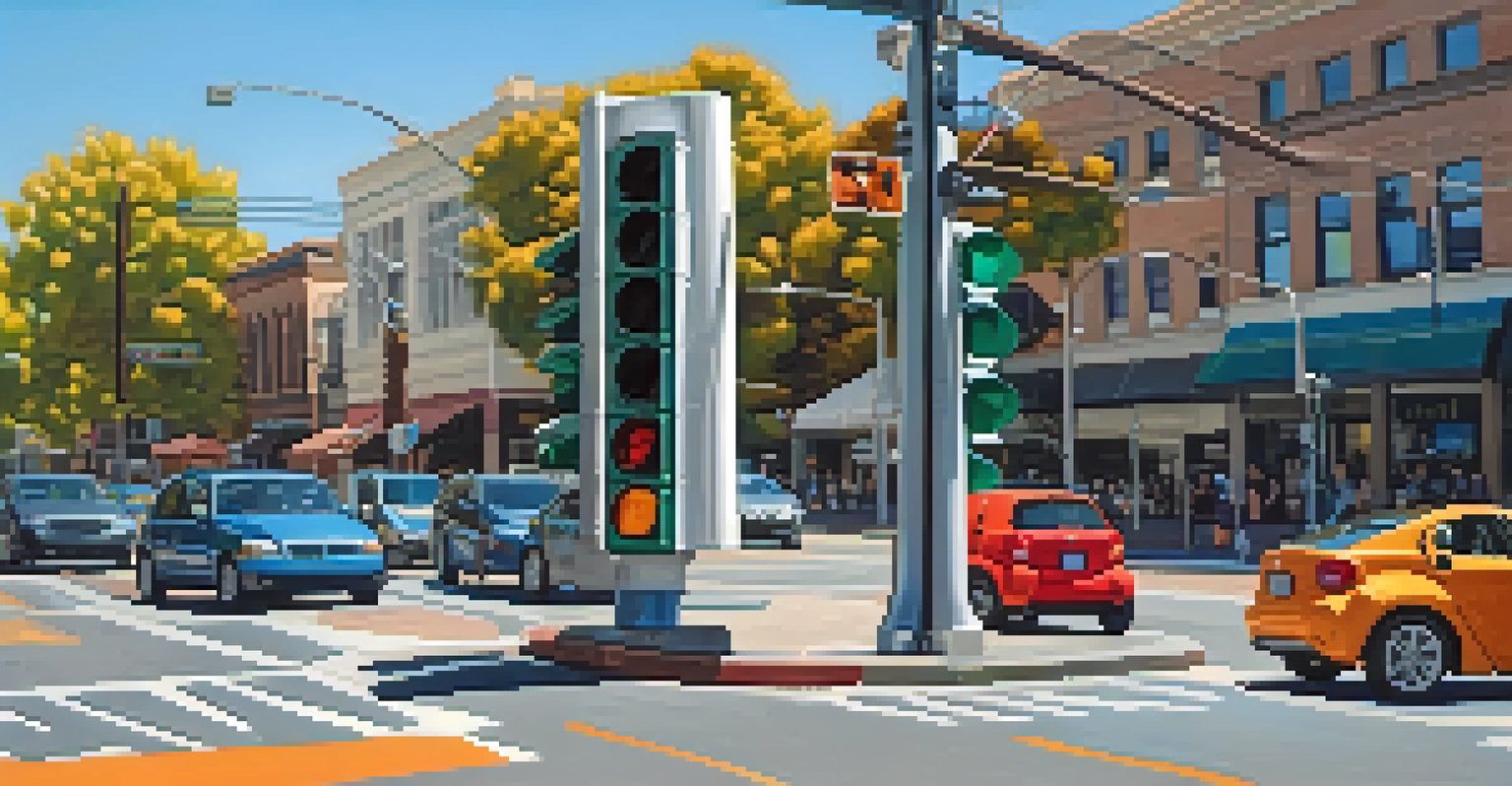Future of Transportation in Sacramento: Trends and Developments

Innovative Public Transport Solutions for Sacramento
Sacramento is on the brink of a public transportation revolution. With the rising demand for efficient commutes, city planners are exploring options like electric buses and expanded light rail systems. These innovations aim to reduce traffic congestion and minimize environmental impact, making public transport a more appealing choice for residents.
The future of transportation is not just about moving people; it's about creating a sustainable and efficient system that enhances the quality of life in our cities.
One exciting development is the potential for autonomous shuttles in Sacramento. These driverless vehicles could provide last-mile connections, making it easier for people to access major transit hubs. This not only enhances convenience but also promotes a more integrated transportation network across the city.
As Sacramento embraces these innovative solutions, it sets a precedent for other cities to follow. The focus on sustainable public transport not only aligns with global environmental goals but also enhances the quality of life for residents, ensuring that everyone can enjoy the benefits of a well-connected city.
The Rise of Micro-Mobility Options in Urban Areas
Micro-mobility options, such as e-scooters and bike-sharing programs, are quickly gaining traction in Sacramento. These alternatives provide a flexible and efficient way to navigate short distances, especially in congested urban areas. By integrating micro-mobility into the public transport ecosystem, Sacramento can reduce reliance on cars.

Cities around the world have seen the success of micro-mobility, and Sacramento is no exception. Local companies are launching programs that allow residents to rent e-scooters or bicycles for quick trips. This not only promotes a healthier lifestyle but also contributes to lowering carbon emissions.
Sacramento's Transport Revolution
The city is enhancing public transport through innovations like electric buses and autonomous shuttles to improve efficiency and reduce congestion.
As Sacramento continues to develop its micro-mobility infrastructure, it will need to consider safety measures and regulations. Ensuring safe riding conditions and proper parking spaces will be essential to making these options viable and appealing to the public.
Sustainable Transportation Initiatives Taking Shape
Sustainability is at the forefront of Sacramento's transportation agenda. The city is actively pursuing initiatives to reduce greenhouse gas emissions by promoting the use of electric and hybrid vehicles. This commitment not only addresses climate change but also enhances local air quality.
Good urban design is about understanding the needs of the community and creating spaces that promote accessibility and connectivity.
Part of this initiative includes expanding the network of electric vehicle (EV) charging stations throughout the city. By making EV charging more accessible, Sacramento encourages residents to switch to cleaner transportation options. This is a crucial step in fostering a culture of sustainability.
Furthermore, Sacramento is exploring partnerships with local businesses to incentivize the use of green transportation. Programs that reward individuals for using eco-friendly methods to commute can significantly shift public behavior and attitudes towards sustainable travel.
Impact of Technological Advances on Transportation
Technology is reshaping the way we think about transportation in Sacramento. From smart traffic signals that optimize flow to real-time data apps that help commuters plan their trips, innovation plays a crucial role in enhancing the urban transport experience. These advancements aim to streamline travel and reduce waiting times.
Additionally, the integration of data analytics allows city planners to better understand traffic patterns and user behavior. This information is invaluable for making informed decisions about infrastructure improvements and service adjustments. The data-driven approach helps ensure that transportation systems are efficient and responsive to the needs of the public.
Micro-Mobility Gains Popularity
E-scooters and bike-sharing programs are becoming essential in Sacramento's transportation landscape, promoting flexibility and reducing car dependency.
Moreover, the potential of 5G technology could further revolutionize Sacramento's transportation landscape. Faster internet connectivity may enable more sophisticated applications, such as connected vehicles that communicate with traffic systems, enhancing safety and efficiency on the roads.
Community Engagement in Transportation Planning
Community involvement is vital in shaping the future of transportation in Sacramento. The city is committed to engaging residents in discussions about their transportation needs and preferences. By hosting forums and surveys, Sacramento ensures that the voices of its citizens are heard in the planning process.
These efforts not only foster a sense of ownership among residents but also provide valuable insights for decision-makers. Understanding the unique challenges and desires of different communities can lead to tailored transportation solutions that truly serve the public's interests.
As Sacramento continues to prioritize community engagement, it sets an example for other cities. Involving residents in transportation planning not only builds trust but also creates a more inclusive approach to urban development.
The Role of Urban Design in Transportation Efficiency
Urban design plays a crucial role in optimizing transportation systems in Sacramento. Thoughtful planning of streets, parks, and public spaces can significantly impact how residents move around the city. Creating pedestrian-friendly environments encourages walking and cycling, reducing reliance on cars.
Furthermore, mixed-use developments that combine residential, commercial, and recreational spaces contribute to a more connected community. When people can access amenities within walking distance, it diminishes the need for long commutes and fosters a vibrant urban atmosphere.
Community Engagement in Planning
Sacramento prioritizes community involvement in transportation planning to ensure that the needs and preferences of residents are reflected in future developments.
As Sacramento continues to evolve its urban landscape, integrating transportation considerations into design will be essential. A cohesive approach that prioritizes accessibility and convenience can lead to a more sustainable and efficient transportation network.
Future Vision: Smart Cities and Transportation Integration
The concept of smart cities is becoming increasingly relevant in Sacramento's transportation future. By leveraging technology and data, the city can create an integrated system that enhances mobility for everyone. This vision includes seamless connections between various modes of transport, making commuting a breeze.
Imagine a day when you can easily switch from a bus to a bike share, and then hop onto a light rail, all with a single app. That’s the kind of future Sacramento is working towards, where transportation options are not just available but interconnected to maximize convenience and efficiency.

As Sacramento embraces this smart city concept, it will need to consider the implications for privacy and security. Ensuring that data is used responsibly while providing valuable services will be essential in building public trust and ensuring a successful transportation future.